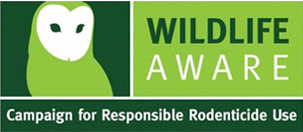Moth Control Manchester,
Stockport & Cheshire

Manchester, Stockport & Cheshire
Moth Pest Control Service
Moths are one of the most annoying pest problems, and the common clothes moth is even more so. This particular type of moth will damage clothing, house hold furnishings and carpets. The common clothes moth is also known as Tineola Bisselliella. Moths are a common pest problem in Manchester, Stockport, Warrington and Cheshire.
The common clothes moth can be extremely destructive and the damage to clothing happens when clothes are kept in cool, dark places such as wardrobes. Unlike other moths, clothes moths are not attracted by lights, they prefer darkness. Therefore if you do live in the Manchester, Stockport, Warrington and Cheshire you may want check you home for signs of Moths.
These moths don’t just feed on clothing; they also feed on carpets, rugs, furniture and furs. The moth has a wingspan of one-half inch and is golden-yellow in colour. The head of the moth is a reddish-gold colour. These moths have a life cycle of 65 to 90 days, and female moths will hatch 40 to 50 eggs.
In order to treat the moth infestation, firstly, Manchester Moth Control will need to identify the source of the infestation.
Brown House Moth
Shiny gold/brown moth approximately 10mm in length. The wing tips have a hairy/feathery appearance and the wings themselves have dark brown spots (although these can easily be rubbed off). The larvae of these insects can cause considerable damage when they feed on articles that contain wool, mohair, fur, hair, feathers or other products of animal origin. The Brown House Moth will also feed on other organic debris including dried or mouldy food waste. The female lays up to 500 white eggs on the surface of fabrics which can hatch into larvae in as little as 10 days. The period of larval development is 6 weeks (under ideal conditions), during which time the larvae actively feed on fabrics etc.
Case-Bearing Moth
The moths are approximately 5mm in length. Forewings are yellowish brown, and there are usually three distinct, dark dots on the outer third of each wing. Hind wings are smaller, lighter, and fringed with hair and scales. Eggs are whitish, and larvae are opaque-white with brown heads.
Clothes Moths rarely fly to lights at night and instead prefer darkness, such as a closet or storage chest. Any Clothes Moths fluttering around the house are probably males, because females travel by running, hopping, or trying to hide in the folds of clothing. The female lays 100 – 150 white eggs on the surface of the fabric which will hatch into larvae in approximately 5 days. The period of larval development is usually 6 weeks, during which time the larvae actively feed on the fabric, however, this can take considerably longer under cooler conditions.
Common Clothes Moth
Slightly larger than the Case-Bearing Moth, adults can reach up to 7mm. The moths are a light, shiny gold colour, with a tuft of reddish hairs on the head.
Treatment is similar for all the textile moths.
We do not use sign written vehicles and will be discreet at all times when dealing with your pest problem. All pest control work is guaranteed, Treatments are available 24 hours a day 7 days a week including bank holidays. We will also advise on any pest proofing issues and how to avoid pest problems in the future.
Ensuring 100% privacy and protecting the reputation of your business, property or premises. Call us now on 0161 448 1782





